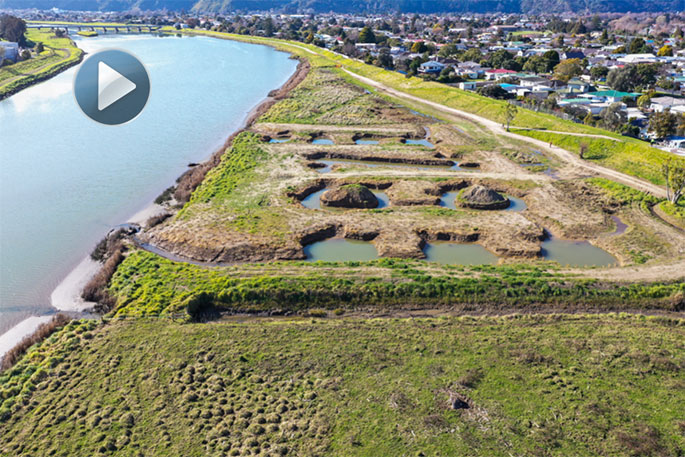Whakatāne residents of both the human and fish kind are enjoying new inanga (whitebait) ponds and spawning habitat built in the river berm alongside the Whakatāne River.
The riverside berm has been leased for grazing by Bay of Plenty Regional Council for many years as a convenient way of keeping the area tidy and controlling weeds.
However, earlier this year, the Rivers and Drainage team decided to trial a different approach that will increase the environmental and amenity values of that area.
Rivers and Drainage Operations Manager, Bruce Crabbe, explains the multi-stage project.
'Downstream of the Awatapu Lagoon outlet we're progressively retiring sections from stock grazing and converting the higher areas to a hay growing operation. In the lower, wet areas, we're improving the habitat for native fish, wading birds and whitebait along with a few changes to improve public access for recreation.
'At the Ferry Road location, we have excavated a number of small, interconnected ponds to provide off-river habitat for inanga and eels. The area surrounding the ponds has now been planted with more than 3000 native plants. Shallow areas have been created around the ponds to provide spawning areas for inanga.
'The ponds will provide a safe haven for the adult inanga, away from predatory fish in the main river channel, so there is a healthy population of adult fish for spawning. So we ask that people don't net whitebait in the ponds so the juvenile inanga have a chance to develop into a good population of adults.
'Other wildlife seem to be enjoying the new environment as well and we've seen a variety of native birds around the area."
The ponds are connected to the river by small channels to allow tidal fluctuations to regularly refresh the ponds system that are designed to retain plenty of water even at low tide.
The ponds are located alongside a low-lying wet area that already has good wading bird habitat.
Regional Council is working collaboratively with Whakatāne District Council to improve public access and amenity value in that area.
The excess spoil produced from the ponds excavation was used to improve the walkway and cycleway between Ferry Road and the Rowing Club.
'These grassed areas within man-made stopbanks are a common sight across the country so this trial is a chance to check how we can improve the amenity of these areas and better reflect the natural river movements and native habitats that they foster."



0 comments
Leave a Comment
You must be logged in to make a comment.